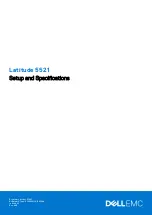
Redirecting Subscriber Traffic Using ISG Layer 4 Redirect
Prerequisites for Redirecting ISG Subscriber Traffic
2
•
Additional References, page 12
•
Feature Information for Redirecting ISG Subscriber Traffic, page 13
Prerequisites for Redirecting ISG Subscriber Traffic
For information about release and platform support, see the
“Feature Information for Redirecting ISG
Subscriber Traffic” section on page 13
.
Restrictions for Redirecting ISG Subscriber Traffic
The ISG Layer 4 Redirect feature applies only to TCP or UDP traffic.
In Cisco IOS XE, access lists cannot be configured as match criteria in ISG Layer 4 redirect
configuration. As an alternative, Layer 4 redirect should be configured in ISG traffic class services.
Information About Redirecting ISG Subscriber Traffic
Before you configure Layer 4 Redirect, you should understand the following concepts:
•
Overview of ISG Layer 4 Redirect, page 2
•
Layer 4 Redirect Applications, page 3
Overview of ISG Layer 4 Redirect
The ISG Layer 4 Redirect feature redirects specified packets to servers that handle the packets in a
specified manner. For example, packets sent upstream by unauthorized users can be forwarded to a server
that redirects the users to a logon page. Similarly, if users try to access a service to which they have not
logged on, the packets can be redirected to a server that provides a service logon screen.
The Layer 4 Redirect feature supports three types of redirection, which can be applied to subscriber
sessions or to flows:
•
Permanent redirection—Specified traffic is redirected to the specified server all the time.
•
Initial redirection—Specified traffic is redirected for a specific duration of the time only, starting
from when the feature is applied.
•
Periodic redirection—Specified traffic is periodically redirected. The traffic is redirected for a
specified duration of time. The redirection is then suspended for another specified duration. This
cycle is repeated.
A redirect server can be any server that is programmed to respond to the redirected packets. If ISG is
used with a web portal, unauthenticated subscribers can be sent automatically to a logon page when they
start a browser session. Web portal applications can also redirect to service logon pages, advertising
pages, and message pages.
Redirected packets are sent to an individual redirect server or redirect server group that consists of one
or more servers. ISG selects one server from the group in a rotating fashion to receive the redirected
packets.
Содержание IOS XE
Страница 14: ...About Cisco IOS XE Software Documentation Additional Resources and Documentation Feedback xii ...
Страница 28: ...Using the Command Line Interface in Cisco IOS XE Software Additional Information xiv ...
Страница 36: ...Intelligent Services Gateway Features Roadmap 8 ...
Страница 46: ...Overview of ISG Feature Information for the Overview of ISG 10 ...
Страница 70: ...Configuring ISG Control Policies Feature Information for ISG Control Policies 24 ...
Страница 128: ...Configuring ISG Access for IP Subscriber Sessions Feature Information for ISG Access for IP Subscriber Sessions 44 ...
Страница 136: ...Configuring MQC Support for IP Sessions Feature Information for MQC Support for IP Sessions 8 ...
Страница 194: ...Configuring ISG Policies for Automatic Subscriber Logon Feature Information for ISG Automatic Subscriber Logon 12 ...
Страница 224: ...Configuring ISG Subscriber Services Feature Information for ISG Subscriber Services 20 ...
Страница 336: ...Configuring ISG Integration with SCE Feature Information for Configuring ISG Integration with SCE 16 ...
Страница 344: ...Service Gateway Interface Feature Information for Service Gateway Interface 8 ...















































